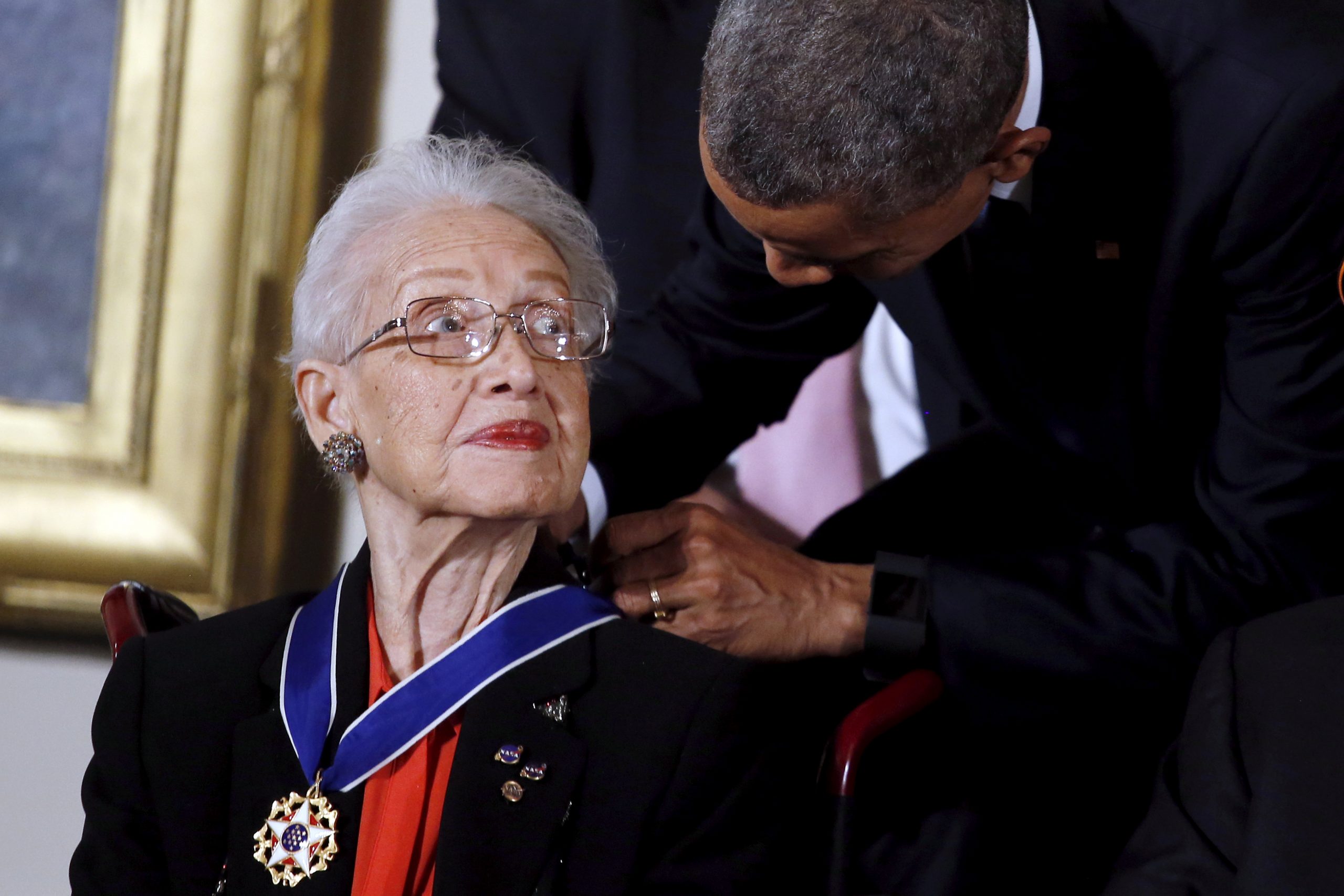Katherine Johnson, the black woman whose mathematical genius took her from a behind-the-scenes job in a segregated NASA as portrayed in the film “Hidden Figures” to a key role in sending humans to the moon, died on Monday at the age of 101, NASA said.
“Our NASA family is sad to learn the news that Katherine Johnson passed away this morning at 101 years old,” NASA Administrator Jim Bridenstine posted to Twitter. “She was an American hero and her pioneering legacy will never be forgotten.”
We're saddened by the passing of celebrated #HiddenFigures mathematician Katherine Johnson. Today, we celebrate her 101 years of life and honor her legacy of excellence that broke down racial and social barriers: https://t.co/Tl3tsHAfYB pic.twitter.com/dGiGmEVvAW
— NASA (@NASA) February 24, 2020
Johnson was awarded a Presidential Medal of Freedom by former President Barack Obama in 2015 and in 2016 he cited her in his State of the Union Address as an example of America’s spirit of discovery.
“She’s one of the greatest minds ever to grace our agency or our country,” then NASA Administrator Charles Bolden said when Johnson was presented the presidential medal.
In 2016 NASA named a research facility for Johnson in her hometown of Hampton, Virginia, and a year later her alma mater, West Virginia State, marked her 100th birthday in August 2018 by establishing a scholarship in her name and erecting a statue.
Johnson and her black colleagues at the fledgling NASA were known as “computers” when that term was used not for a programmed electronic device but for a person who did computations. They were little known to the public for decades but gained overdue notoriety when the book “Hidden Figures” was published and the 2016 Oscar-nominated movie hit the screens. Johnson attended the 2017 Oscars ceremony, joining the film’s cast in presenting an award for documentaries, and was given a standing ovation.
Johnson had a groundbreaking career of 33 years with the U.S. space agency, working on the Mercury and Apollo missions, including the first moon landing in 1969, and the early years of the space shuttle program. Astronaut John Glenn thought so much of her that he insisted Johnson be consulted before his historic earth-orbiting flight in 1962.
“Get the girl to check the numbers,” he said.
“He knew I had done (the calculations) before for him and they trusted my work,” Johnson told the Washington Post in January 2017.
IGNORED THE RACISM
During the space race between the United States and the former Soviet Union that began in the late 1950s Johnson and her co-workers ran the numbers for unmanned rocket launches, test flights and airplane safety studies using pencils, slide rules and mechanical calculating machines. But they did their work in facilities separate from white workers and were required to use separate restrooms and dining facilities.
Johnson always said she was too busy with her work to be concerned with racism.
“She didn’t close her eyes to the racism that existed,” Margot Lee Shetterly wrote in “Hidden Figures.” “She knew just as well as any other black person the tax levied upon them because of their color. But she didn’t feel it in the same way. She wished it away, willed it out of existence inasmuch as her daily life was concerned.”
As a girl, Johnson was fascinated by numbers and counted everything, even the steps she took while walking and the dishes she washed after dinner.
She grew up in West Virginia at a time when educational opportunities for blacks were limited because of segregation. But her mother, a former teacher, and her father, a farmer and handyman, stressed education and moved the family 120 miles to a town that had a high school for black children.
Johnson’s preternatural math skills got her into West Virginia State College at age 15. She zipped through the school’s math program, earning degrees in math and French before becoming one of the first black students in the graduate school at West Virginia University in 1938.
After teaching school for seven years, Johnson went to work for the National Advisory Committee for Aeronautics, a forerunner of NASA, in Hampton in 1953 with dozens of other black women.
Johnson found herself in a realm made up almost exclusively of white men when she was chosen to be part of the team supporting the 1961 mission that made Alan Shepard the first American in space. She would go on to calculate crucial rocket trajectories, orbital paths and launch windows.
Johnson made the transition to the computer era and worked on the shuttle program while writing or co-writing 26 research reports before retiring in 1986, NASA said.
She said she was most proud of her contributions to the first moon mission, which included the calculations that synched the lunar lander craft and the orbiting command module.
Johnson and her first husband, James Goble, who died of a brain tumor in 1956, had three daughters. She married Lieutenant Colonel James Johnson in 1959.
(Writing by Bill Trott; Additional reporting by Barbara Goldberg in New York; Editing by Diane Craft and Lisa Shumaker)

























 Continue with Google
Continue with Google